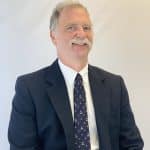Water professionals are “There When You Need It” during Drinking Water Week and every week
Taking place this week from May 2-8, Drinking Water Week offers consumers an opportunity to recognize the hardworking people performing various roles to ensure that clean and safe drinking water is “There When You Need It.”

Tata & Howard, Inc. and partners throughout North America are observing Drinking Water Week by recognizing the vital role water plays in daily life, the infrastructure that is required to carry it to and from homes and businesses, and the important work of water professionals behind the scenes.
Whether it’s a water engineer designing a water treatment facility, an operator ensuring the safety and quality of drinking water, or a member of a pipe crew maintaining the infrastructure in our community, water professionals work around the clock to ensure water is there when you need it.
“Providing clean, safe, and reliable drinking water is a critical role that water professionals dedicate their lives to,’ said Tata & Howard’s Co-President Karen Gracey. “Day in and day out, even when faced with a pandemic and added challenges, water professionals do their best to be prepared and ensure the water reaching everyone in the community is there when needed.”
The work they are performing throughout the pandemic, often sacrificing time with their family, is nothing short of heroic. I am proud to be associated with them,” said American Water Works Association CEO David LaFrance.
To commemorate the week, water utilities, water organizations, government entities, environmental advocates, schools, and others throughout North America and beyond are encouraging consumers to learn more about the importance of water and water infrastructure, especially in times of crisis.
To learn more about the work that Tata & Howard performs to ensure safe drinking water, visit our website at http://www.tataandhoward.com.
About Drinking Water Week
For several decades, AWWA and its members have celebrated Drinking Water Week, a unique opportunity for both water professionals and the communities they serve to join together in recognizing the vital role water plays in daily lives. Free materials for download and additional information about Drinking Water Week are available on the Drinking Water Week webpage.
# # #
Founded in 1992, Tata & Howard, Inc. is a 100% employee-owned water, wastewater, and stormwater consulting engineering firm dedicated to consistently delivering innovative, cost-effective solutions in the water environment. Tata & Howard has gained a solid reputation as an industry leader in the Northeast by bringing knowledge, integrity, and dedicated service to all-sized markets, both public and private. The firm has offices in Massachusetts, Connecticut, New Hampshire, Vermont, and Arizona. For more information, visit http://www.tataandhoward.com.
View press release here.




















